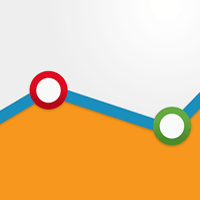Amplified Analytics Trends for the Digital Future

It can be challenging to know definitively what the driver of conversion or engagement events are on a digital property, but it is becoming much less complicated thanks to the increasing experience of Web professionals and the powerful technologies supporting them.
What the digital realm makes possible is to know what strategic efforts, promotional initiatives and design experiences are most effective, providing an opportunity over time to identify the elements that encourage users to engage and those that prevent greater levels of success in general. The insights that can be gathered from the vast pool of available data today, not only informs brands about where their resources are best invested to acquire new customers, but how to plan and project for future growth (and revenue) as well.
In the digital decades past, marketing and advertising - as well as user experience (UX) initiatives - lacked the finite "measurability" that allowed those responsible (the campaign managers) to determine return accurately. Most professionals are familiar with the famous John Wanamaker quote, "Half the money I spend on advertising is wasted; the trouble is I don't know which half." Fortunately, this clever phrase is quickly becoming irrelevant.
The good news for today's enterprises is that the digital realm is incredibly data-driven. In addition to the nature of "track-ability" inherent in digital, there is an abundance of solutions available that provide impression and conversion costs included at their core, and that has made it easier than ever before for Web businesses to determine the return so many desperately rely on, providing access to the data and insights required to drive growth.
In this month's edition of Website Magazine, explore the trends shaping digital as well as the tactics and tools to make an investment in analytics generate a positive return.
TRUST THE DATA
Master the Complexities of Analytics
There are some significant challenges facing those interested in understanding more about the performance of their promotional and optimization initiatives. Today's digital experience, for example, is incredibly fragmented - users are on multiple devices, visit different channels with regularity and hop between these experiences frequently. That creates a terrible mish-mash of data that is almost impossible to make sense of and measure - at least for the uninitiated.
What makes matters even worse is that even as companies are investing in analytics most simply do not trust the data (and insights) they discover. In fact, only 38 percent of respondents, according to a survey by KPMG and Forrester Consulting, have a high level of confidence in the insights they gather, and only one-third trust the analytics they generate from their business operations. That, of course, does not change the fact that brands are aware of the importance of analytics and are actively using it. Half of those surveyed, in fact, reported using data and analytics tools to understand their existing customers, 48 percent reporting using them to find new customers, and another 47 percent use them to develop new products and services.
"As analytics increasingly drive the decisions that affect us as individuals, as businesses and as societies, there must be a heightened focus on ensuring the highest level of trust in the data, the analytics and the controls that generate desired outcomes," said Christian Rast, the global head of data and analytics and a partner with KPMG in Germany, in a statement. "Organizations that continue to invest in D&A without determining its effectiveness could likely make decisions based on inaccurate models, which would perpetuate a cycle of mistrust in the insights."
Success with anything requires a plan and in the realm of analytics the same holds true. And when enterprises know their audience and their preferences, it becomes easier to turn data into dollars.
START WITH THE ANALYTICS ESSENTIALS
Those enterprises that are content to only measure the basics, confident in their ability to spot both macro and micro-level insights on their own without much digging, have a long list of metrics to monitor on an ongoing basis including: those related to traffic generation (overall site traffic, traffic sources, mobile traffic, click-through rate and cost-per-click); conversion (conversion rate, cost per lead, bounce rate, average page views per visit, average cost per page views, average time on site, rate of retuning visitors); and yes, of course, revenue metrics (return on investment and the cost to acquire a customer).
Those with a more advanced expectation of analytics, however, have plenty to concentrate their efforts upon.
GET IN THE USER'S MIND
Know Every Audience Segment with Analytics
In terms of user experience, analytics makes it possible for brands to become hyper-aware of behavioral triggers - from something as simple as a click to something deeper such as loyalty. While many Web workers will be content to measure website traffic, engagement and conversions (and there is almost always a sufficient amount of data to do so), it's also possible to analyze website visitors. Fortunately, there is plenty of information that professionals can gather from even the briefest glance and many analytics solutions makes it incredibly easy to do so, providing insights for example on the geography, demographics, interests, technology, behavior, and level of engagement of an audience or customer base.
Customers don't have identical characteristics and they most certainly don't behave in the same way. As marketers increasingly employ different marketing tactics for each group, however, segmenting should be a core practice in their digital strategy. While it's actually quite common for some basic segmentation to occur, the abundance of data today makes it possible to move beyond the traditional (age, gender, etc.) to a far more sophisticated break down of audiences. That's a good thing for ROI-hungry Web workers.
At Adobe Summit, Adobe introduced Segment IQ and is now announcing the first live feature within that category: Segment Comparison for Analysis Workspace. In what is expected to be a first in a series of audience analysis and discovery tools within Segment IQ, the new capability essentially makes it possible to discover the differences between sets of target audience segments through automated analysis of all known metrics and dimensions.
"In speaking with customers, we saw analysts spending an incredible amount of time comparing various segments with each other in order to understand the actionable differences between them," wrote Trevor Paulsen of Adobe's Analytics team. "Segments often overlap with each other or have non-obvious differences lurking deep within the data, and uncovering these insights is like picking a needle out of a haystack - sifting through these cascades of data manually to find the most significant differences is often impossible."
Use Analytics to Prioritize Business Opportunities
Empowering marketers is the name of the game for many of today's technology platforms, whether it is the ability to make changes on the fly with minimal or no IT support or a way to transform data into actual strategy. The latter is exactly what a new product from BrightEdge hopes to provide, particularly when it comes to creating content that matters to individuals in their moment of need like when they are searching for answers.
BrightEdge's DataMind is a deep-learning engine that identifies important search trends, competitive threats and market shifts in real-time and works with other BrightEdge products (like the recently announced Content IQ and Intelligence Experiences solutions) to provide accurate and actionable insights to drive better content strategies and avoid guesswork to identify potential content topics with high demand.
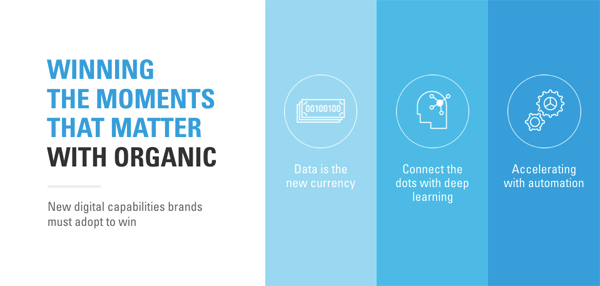
Personalization platform Bloomreach announced improvements to its Compass application as well that are worth a closer look for digital merchandisers. The Bloomreach innovations leverage algorithmic intelligence, which prioritizes content opportunities while predicting the impact on revenue.
Digital merchandisers can face hundreds if not thousands of content and product decisions daily; what Compass now provides is insights and suggestions into what they should do with their products, categories, navigation and site-search queries, and even ranks the opportunities by their potential monthly revenue impact.
"Compass represents a market shift toward role-based analytics that are immediately actionable," said Raj De Datta, co-founder and CEO of BloomReach. "All too commonly, analytics platforms crunch a bunch of data and then spit out pages and pages of reports, making the user determine what they should do. We redesigned Compass to bring together data from every consumer interaction to one place, and give digital merchandisers and site-experience managers a prioritized list of opportunities to accomplish their goals."
Bridge Conversion Gaps with Analytics
The overarching trend for those in e-commerce/retail is to explore analytics to find answers to user-experience questions, retention problems and conversion issues. Magento merchants, for example, will soon be able to analyze their retail businesses better thanks to the company's acquisition of RJMetrics, which was picked up for an undisclosed amount.
Types of information that can be gleaned from RJMetrics include improved segmentation and personalization abilities, better insights into merchandising decisions (like promotion, placement), customer lifetime value info, ROI by channel (see image), churn analytics, and more.
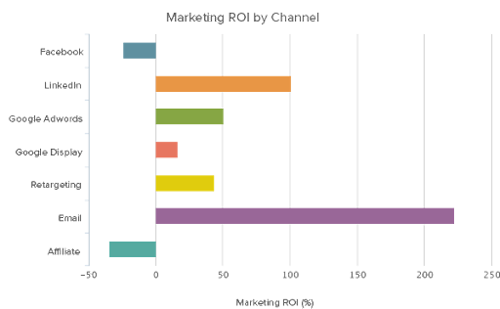
For the latter, as more retailers look to take advantage of a "subscription economy" they can identify when a shopper is ready to cancel their membership - leading retailers to miss out on that valuable recurring revenue. Not only are subscription-born companies like Stitch Fix, Fabletics and others leveraging monthly programs, but also retailers like Amazon and Target for items shoppers purchase on a regular basis (e.g., household goods, baby items, beauty products).
The Simplification of Analytics
One of the reasons there are not more digital analysts available to do much of what is described above is because it is very complex and involved - but that is starting to change thanks to the trend toward the simplification of analytics solutions.
Google, for example, rolled out a new Google Analytics app (iOS and Android) that offers machine-learning powered insights that will be very attractive to brands. The insights can point out the good (e.g., increases in sales or new users) and the bad (like decreases in average session duration or conversion rate). That's a big step up from analytics solutions of the past, but there are still other providers that are also doing much of the analysis on their end to the benefit of 'Net professionals.
Visual Analytics for VoC Data
If marketers are going to improve the customer experience it is imperative they understand the story behind the metrics. Audience research solution iPerceptions released a rather interesting solution recently that will enable its users to dig more deeply into their voice of customer (VoC) data in order to better understand the customer experience.
The new "Advanced Exploration" feature allows marketers to leverage the power of visual analytics and business intelligence solution Tableau to perform analysis of their VoC data to uncover insights. Customers of iPerceptions will now be able to create reports (with 24 different chart types to choose from and custom colors to match branding), share unlimited viewer licenses, subscribe to automated emails and get insights tailored to their specific needs.
Another way that enterprises are beginning to simplify their analytics initiatives is to develop workflows to optimize their internal tasks, projects and processes.
Content intelligence platform Conductor has launched a new solution designed to improve the workflow and productivity of digital marketers by surfacing important business insights through a live feed of personalized and very "plain-English" recommendations. Conductor's new Insight Stream aims to surface relevant information that will offer marketers suggestions to manage, optimize, and measure their content marketing and SEO efforts.
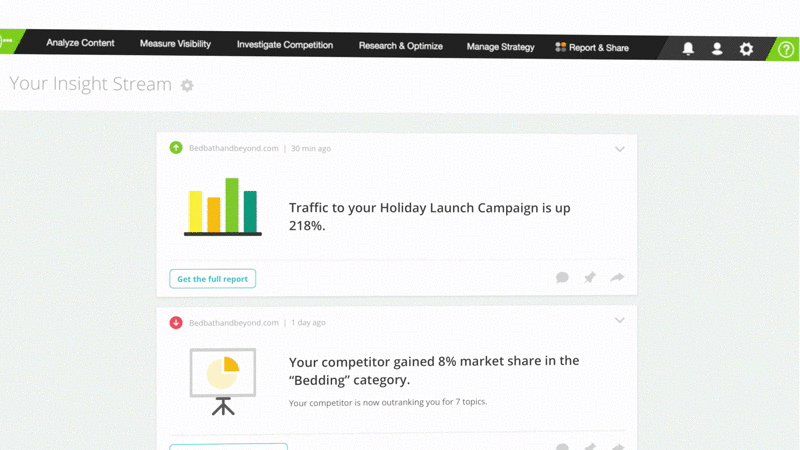
The solution will leverage data found from Web crawling, competitive intelligence data, Web analytics systems and search engine marketing metrics. Additionally, the platform delivers combined insights from third-party tools like Google and Adobe Analytics, Google Search Console, and site-audit tool Deep Crawl to provide marketers with that much discussed and highly coveted "holistic" view of organic performance.
There's been an increase over the past few years of companies wanting to provide those "simple human insights" and brands are reaping the rewards.
"As a manager overseeing multiple teams, it's critical that I get a full view of how our marketing channels are performing," said John Schulenburg, group leader of content marketing and SEO for Intuit Quickbooks. "With Insight Stream, I have a proactive understanding of the impact of our organic marketing activities and have a single experience where I can effectively manage and collaborate with my team."
It is often easy to miss the point of analytics and investing in these initiatives. What professionals are really after of course is the discovery of something that will move an enterprise in a positive direction and for content marketers the opportunity is immense.
Embedded Analytics
In this age of cloud-based software, many tools and products employ outside platforms for specific functions that complement their core, such as Stripe for electronic payments, Twilio for communications or Amazon Web Services for cloud computing services.
San Francisco-based Keen IO is making a bid to become the analytics equivalent of those services, with the release of its Native Analytics. It is a white-labeled platform that, via a software development kit and API, offers analytics and advanced visualization that can be customized, branded by the client company, and embedded natively into an app, website or service.
"Nobody else offers this analytics-as-a-service," KEEN COO Will O'Brien told Website Magazine.
Point solutions like Mixpanel, Amplitude and Google Analytics, he said, have specific capabilities, while Native Analytics is highly adaptable. The chief competition, he continued, comes from developers who choose to take months to build their own analytics stack. Previously, Keen's platform was designed for integration by developers, but now it's been productized, expanded and white-labeled.
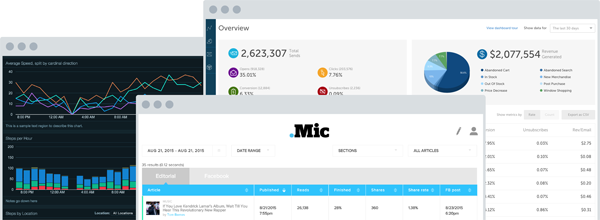
E-commerce automation platform Bluecore, for instance, white-labels Native Analytics to provide real-time dashboards and shopping cart data, customizing the platform for clients, while visual marketing platform Pixlee offers a Keen-powered analytics dashboard that describes user engagement and conversion. Likewise, online publication Mic.com employs Native Analytics to integrate user engagement stats with its content management system (CMS).
Invest in Analytics Solutions
As digital marketers continue to accelerate the pace of their content development and customer experience initiatives and take advantage of more channels and Web-based promotion opportunities, the amount (and variety) of data can seem overwhelming at times. Layer on personalization and behavioral data, and the situation becomes far more complicated. Fortunately, there are many data-related solutions available that make quick work of not only aggregating all the information, but also processing it to a point where actual insights can be gained and, of course, put into action.
Website Magazine published some insights back in the Aug. 2016 issue on a few of the more interesting options available for startups and small and mid-size enterprises today (although these can also be used on the large, enterprise level as well).
Start Measuring, Optimizing with Insights
Analytics is an essential element to Web success. Without knowing what needs to be measured, there will be no opportunity to optimize anything. Get started with an amplified analytics plan now and greater revenue and a better user experience is just around the virtual corner.





